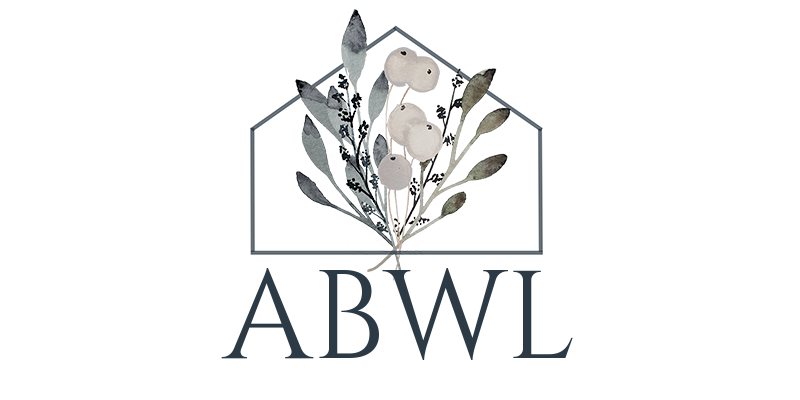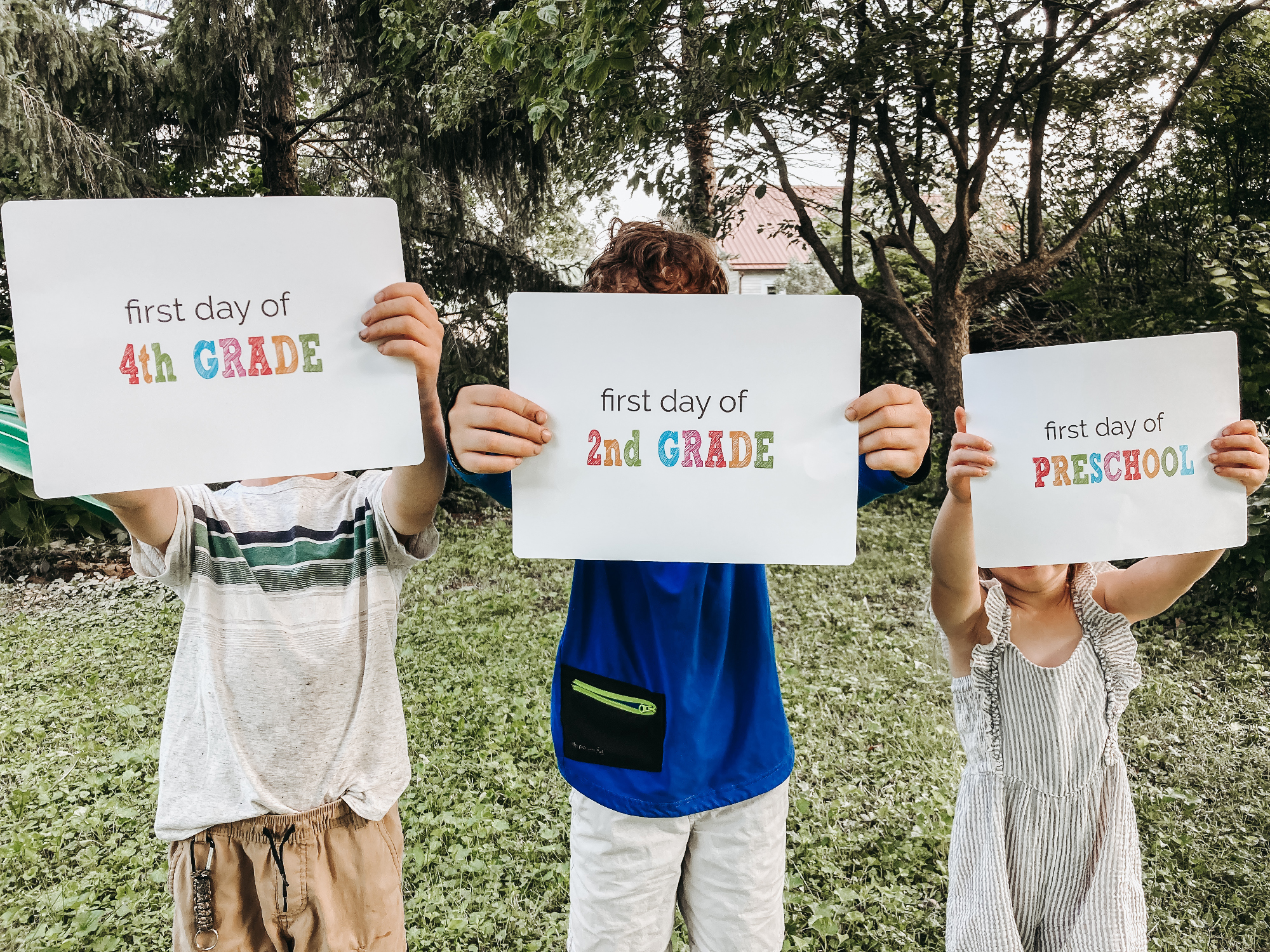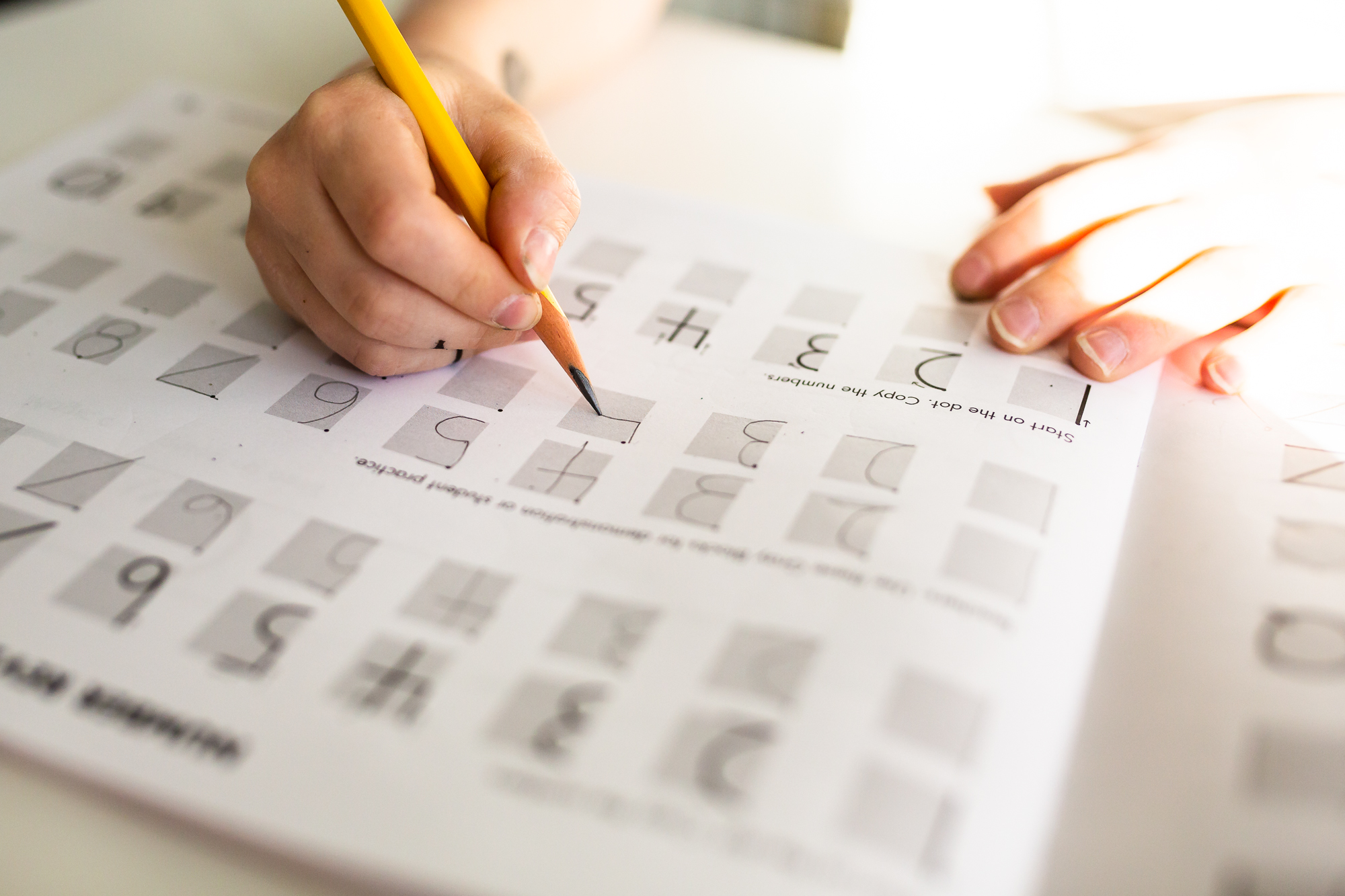let's be social!
I am soooo excited about today’s post! I’m going to be listing out a whole bunch of our very favorite Charlotte Mason-inspired homeschool nature study resources for you to use with your kids.
And at the bottom, you’ll also find a few nature study lesson plans I’ve created to get you started!
Whether you’re homeschooling for the long haul, or you’ve suddenly found yourself with your kiddos at home for an extended period of time due to the Coronavirus pandemic, I hope today’s resources help you enrich your homeschool days!
And to see how we structure our days, after you read this post, head over to see what our daily homeschool routine looks like!
Our Favorite Nature Study Books
Okay, so I’m going to start with some of our very favorite books. We’ve been able to find all of these in our system (in person or within the Evergreen system), so if you don’t want to buy them, you can grab them free from your local library.
NOTE: THE FOLLOWING ARE AMAZON AFFILIATE LINKS. I EARN A SMALL COMMISSION WHEN YOU CLICK THESE LINKS TO PURCHASE, WHICH HELPS SUPPORT MY BLOG SO I CAN KEEP WRITING ENCOURAGING POSTS TO SHARE WITH YOU. YOU WILL NEVER PAY MORE BY USING AN AFFILIATE LINK.
My Favorite Online Shops
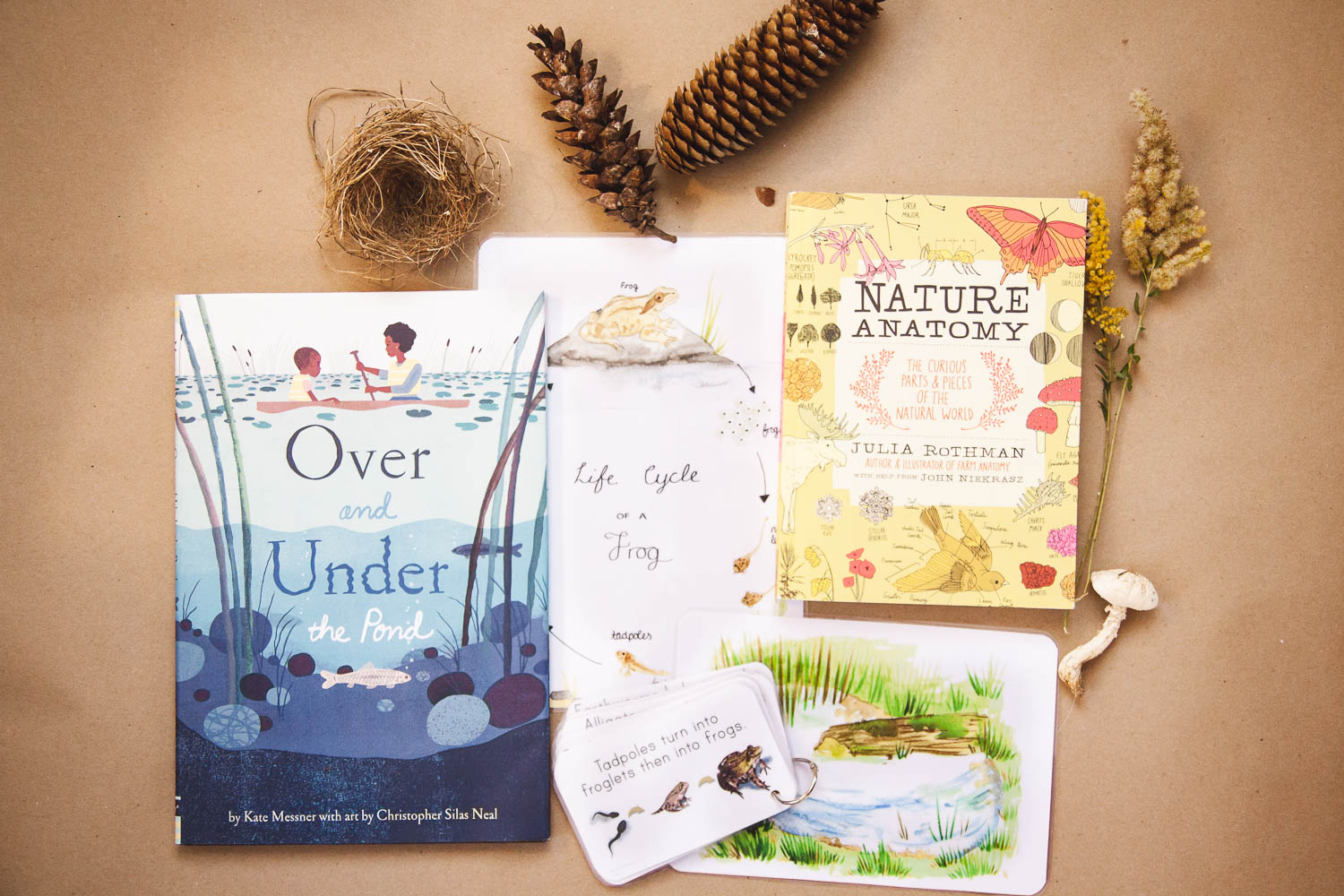
There are several online shops I frequent and LOVE because they are fellow homeschooling mamas with incredible talent. The following is a list of my favorite shops for printable posters, unit studies, and cards.
NOTE: THE FOLLOWING INCLUDE AFFILIATE LINKS. I EARN A SMALL COMMISSION WHEN YOU CLICK THESE LINKS TO PURCHASE, WHICH HELPS SUPPORT MY BLOG SO I CAN KEEP WRITING ENCOURAGING POSTS TO SHARE WITH YOU. YOU WILL NEVER PAY MORE BY USING AN AFFILIATE LINK.
These aren’t free resources, but there are four main reasons why I absolutely don’t mind paying for them:
- I love to support fellow moms.
- Their resources are beautiful.
- Their items are inexpensive (and 100% worth it).
- They save me time and sanity. 🙂
BONUS: Most of these shop owners are currently running sales in their online shops because they know that many of you will be wanting some additional resources while you have your kiddos home during this Coronavirus quarantine time. So don’t walk…RUN to these online shops!
- Green Urban Creative on Etsy
- Twig and Moth on Etsy
- Chickie and Roo on Etsy
- Fiddlesticks Education on Etsy
- Honeycomb Cabin on Etsy
- The Silvan Reverie on Etsy
- Mini Nature Explorers on Etsy
- Gentle + Classical Nature curriculum (FREE curriculum)
- Gentle + Classical Nature Bundle (either the whole bundle or pick and choose items)
- Firefly Nature School (individual unit studies on loads of different topics)
Our Favorite Nature Study Tools
In order to best explore nature, you have to be willing to get your hands on it. This may mean capturing bugs, taking a closer look at twigs, or peeking under rocks. We actually don’t have a ton of tools right now, but we do have a small list of what I feel are the absolute essentials to make the most of your nature studies.
Here’s what you’ll find in our nature backpacks!
NOTE: THE FOLLOWING ARE AMAZON AFFILIATE LINKS. I EARN A SMALL COMMISSION WHEN YOU CLICK THESE LINKS TO PURCHASE, WHICH HELPS SUPPORT MY BLOG SO I CAN KEEP WRITING ENCOURAGING POSTS TO SHARE WITH YOU. YOU WILL NEVER PAY MORE BY USING AN AFFILIATE LINK.
How to Get the Most Out of Your Nature Walks
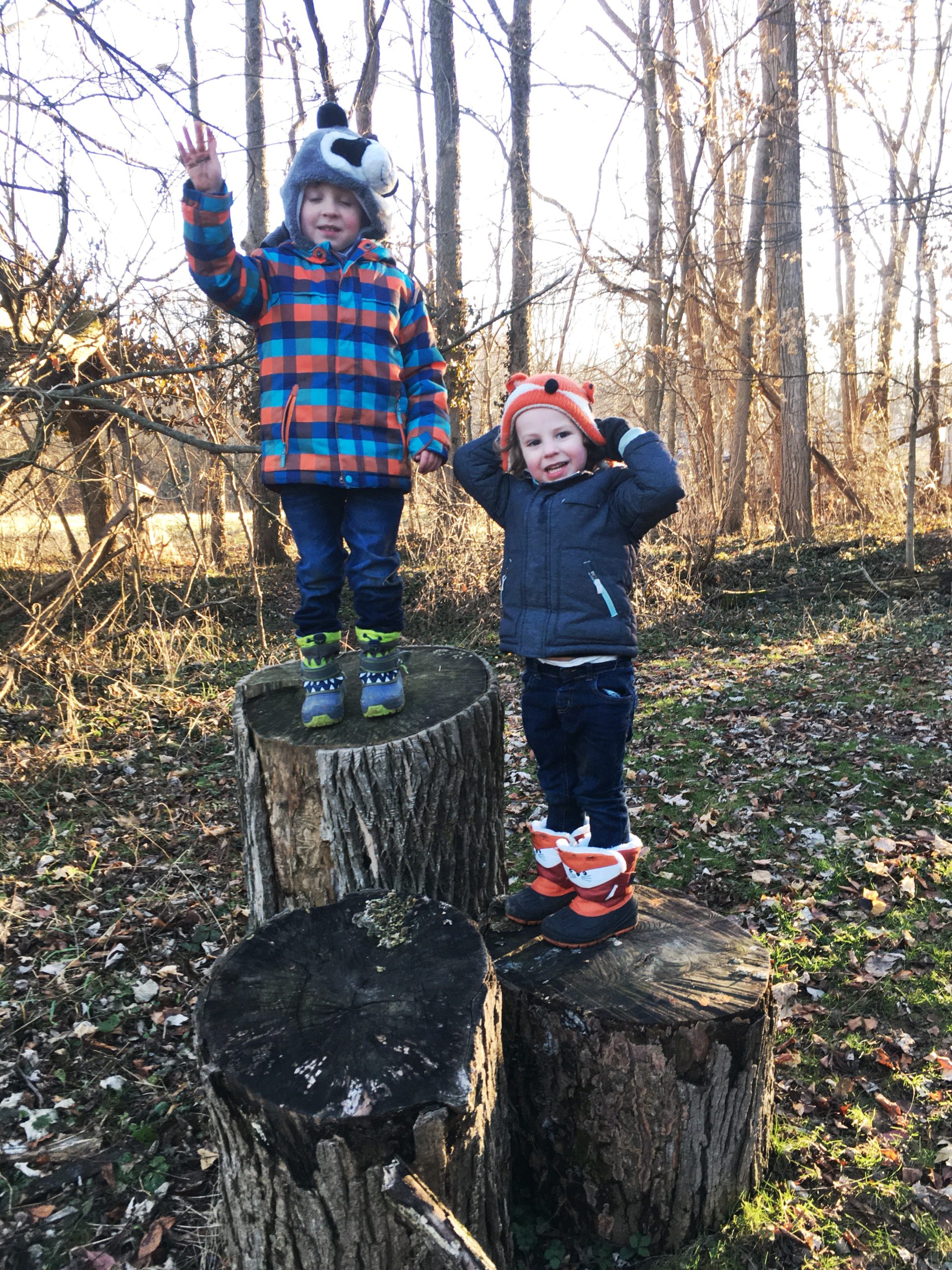
No nature study is complete without getting up close and personal with nature! Our very favorite way to study nature is by taking nature walks. Not only are they are FREE way to study and explore nature, but they get you and your kiddos some fresh air, sunshine, and exercise.
First, even if you’re in a fairly urban area, you can absolutely still find nature! The lesson plans I’m including below can be done even if you aren’t surrounded by woods. Bugs, birds, rocks, and trees are literally everywhere…so don’t be discouraged if you live in a big city! Even a walk through your neighborhood will yield far more nature than you might expect, if only you take the time to slow down and look.
Second, nature walks are more intentional than just a walk around your neighborhood. They are a time to slow down, look for some specific things in nature, and help your children learn how to attend and observe (they need help with this).
So, here are a few things that I’ve learned to help us get the most out of our nature walks.
- Take your time. For some reason, when we first started, I kind of rushed my kids along. It wasn’t that I was in a hurry to finish our walk, but I was in a hurry to find the things we were looking for. The more we’ve gone on nature walks, the more I’ve learned to meander, to stroll, to delight in the moments. I’m a checklist kind of person, so if our goal on the walk was to look at moss and lichens, I wanted to get my kids to the spot I had in mind so we could “do the lesson.” I’m a work in progress, but I have learned not to rush the process. We go, enjoy ourselves, and let the kids burn off energy – and make our observations and collections as we go.
- Teach your kids how to observe and narrate. One of the points of nature studies is for kids to really pay attention to what they see, smell, feel, and hear (tasting in nature is not recommended 😜). But they may need some help learning how to observe those minute details. We practice every single time we look at anything nature-related. For example, when we were studying lichens, we were all looking at the lichen and I said, “I see so many colors. There’s bright green, orange, and even some black. And look at that green! It looks like a small city. The sprouts of the lichen stick way up, like they’re reaching toward the sky.” Or when we observed moss on our hike, I modeled, “It looks so soft! Oooooh, it is soft. When I rub my hand over it lightly, I can feel the soft, spongy moss under my fingers. And when I look closely, each little sprout of moss sticks up, kind of like blades of grass.” We practice describing what we see together. Then as we continue walking, I will ask them to tell me what the moss looked like so they can practice narrating.
- Ask loads of open-ended questions. We like to ask a lot of, “Why do you think…?” It helps your kiddos think critically about whatever it is you’re asking. Even if they don’t know the answer, we encourage them to take a guess (hypothesize). It gives them practice asking their own questions, and helps them facilitate their own research.
- Bring along a bag of some sort to carry the sticks and rocks your kids pick up along the way. We learned this early on. The boys wanted us to carry like 10 sticks, 5 rocks, and a handful of leaves. We realized pretty quickly that if we took along a pack/bag/backpack, we’d have a way to tote all fo our treasures home.
- Take a small notebook and pencils along to make notes, observations, or drawings. We love to take either a notebook or clipboard and just sit and draw. We encourage the kids to draw what they see, and we do not expect perfection. Clark has made some amazing drawings of the things we’re studied in nature! I have found that we all typically draw better, more detailed pictures if we do the drawings after we’ve observed and narrated our observations. That enables us to really capture the small details.
- Don’t worry if they’re not obsessing over the “lesson” you’ve planned. Say you go out to study moss, and your kids take a quick glance, say, “Oh, that’s cool, Mom,” and trot off to sword fight with the sticks they found (yep, true story from a recent nature walk). Take a deep breath and just enjoy the walk. I do my best to get my kids to attend whatever we’re observing by excitedly showing them or challenging them to find it first (“Oh my gosh, boys! Look what I found!!” or “Hmmmm…who can find the first animal print?!?”) But some days they’re just not that into my planned lesson – and that’s okay! We’re in nature and they’re exploring, even if it’s not exactly what I had in mind. That’s why we do this often. Sometimes they’re really into it and focused, and other times…well, it’s more sword fighting and rolling down hills. Education is a life-long journey, so we’ll get to it eventually.
Nature Study Lesson Plans
If you’re just getting started with nature studies or just need some new ideas, I hope this helps you in your journey!
The following nature study lesson plans are super easy to implement, require very little in the way of supplies (in fact, though I give you my list of supplies, you can do each of these lessons with nothing more than what you find in nature), and can be done during any season (in fact, Charlotte Mason advocated for outdoor nature study in all weather unless it’s too extreme to be safe outside).
Moss & Lichens
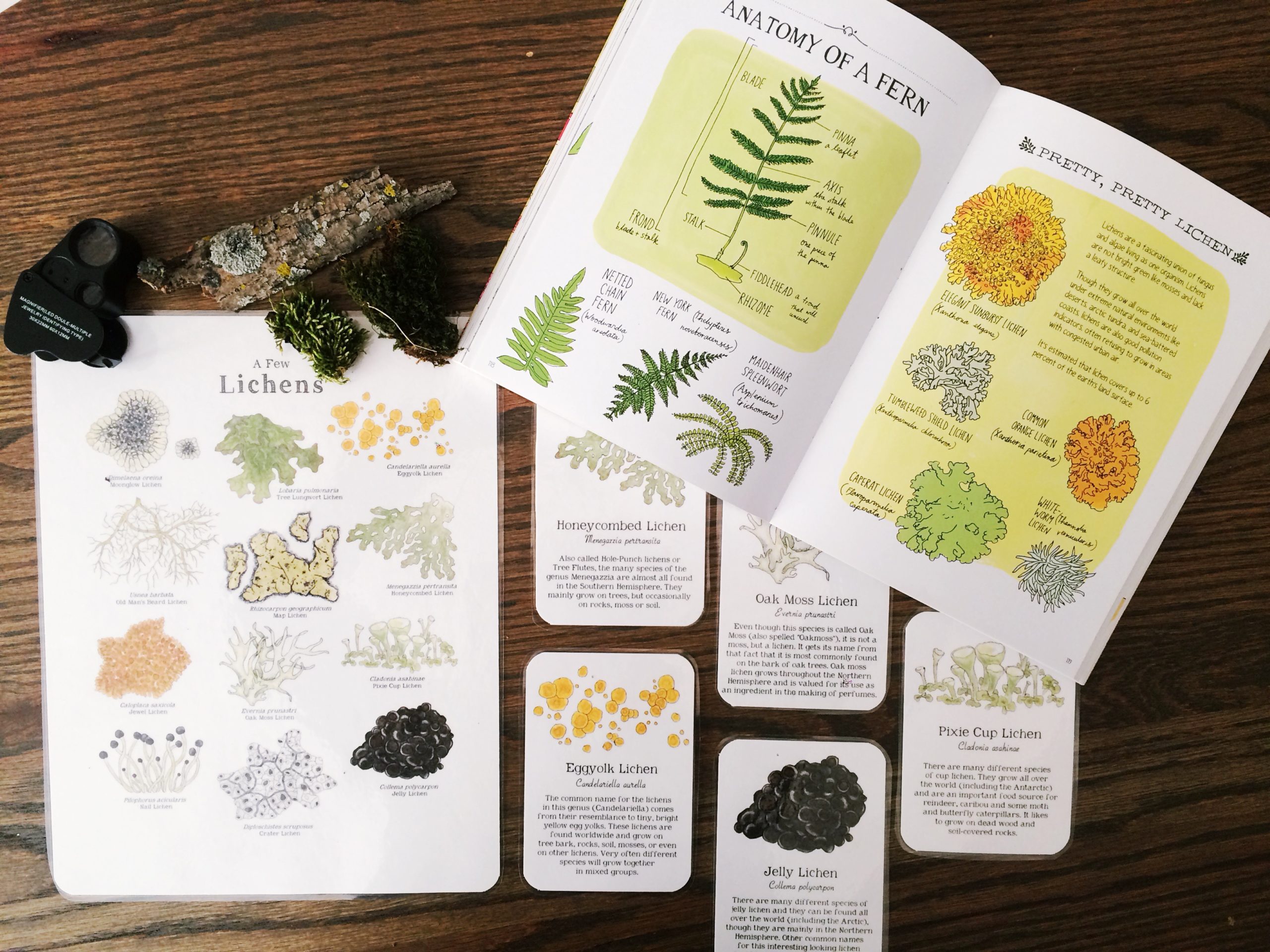
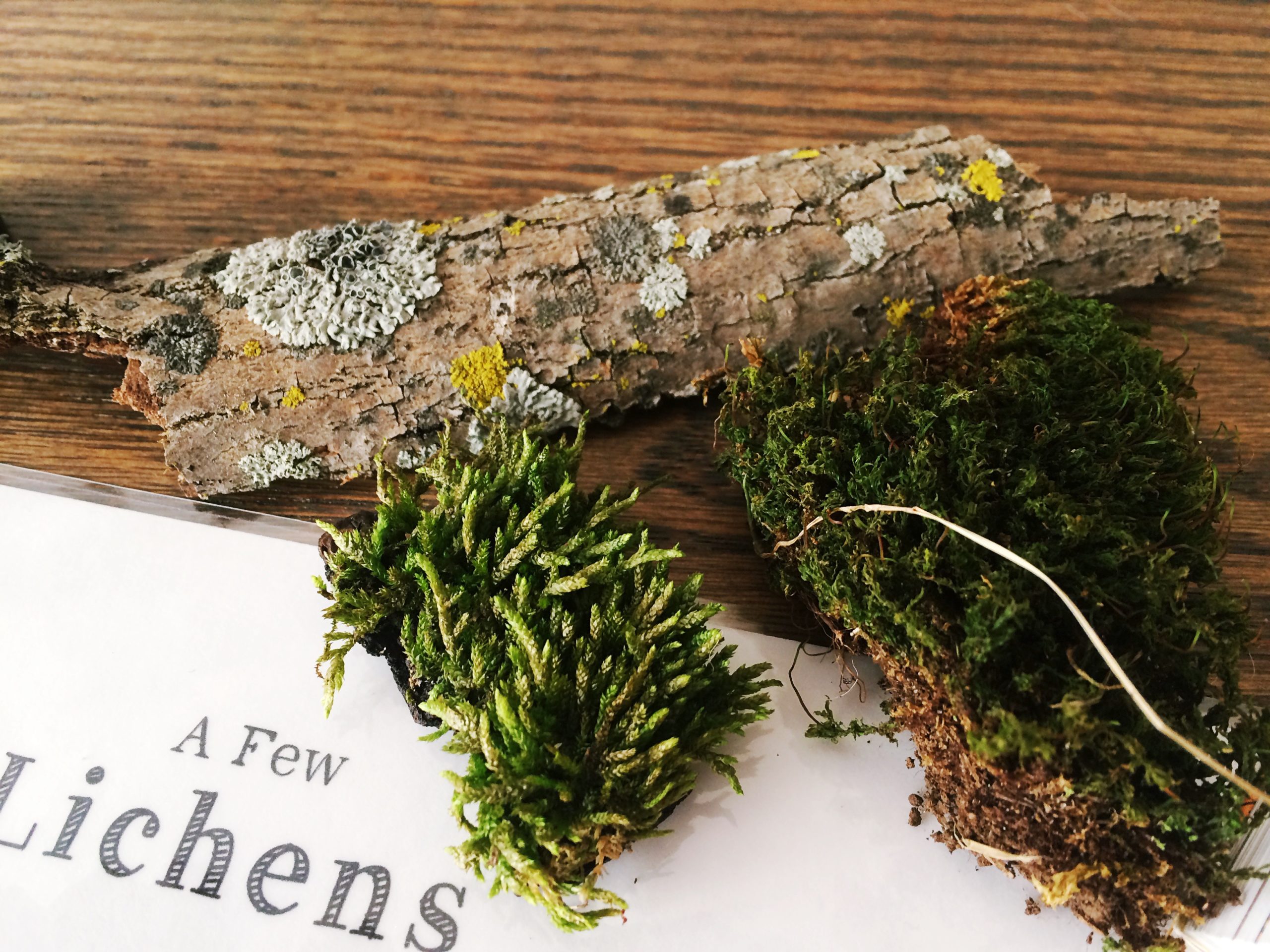
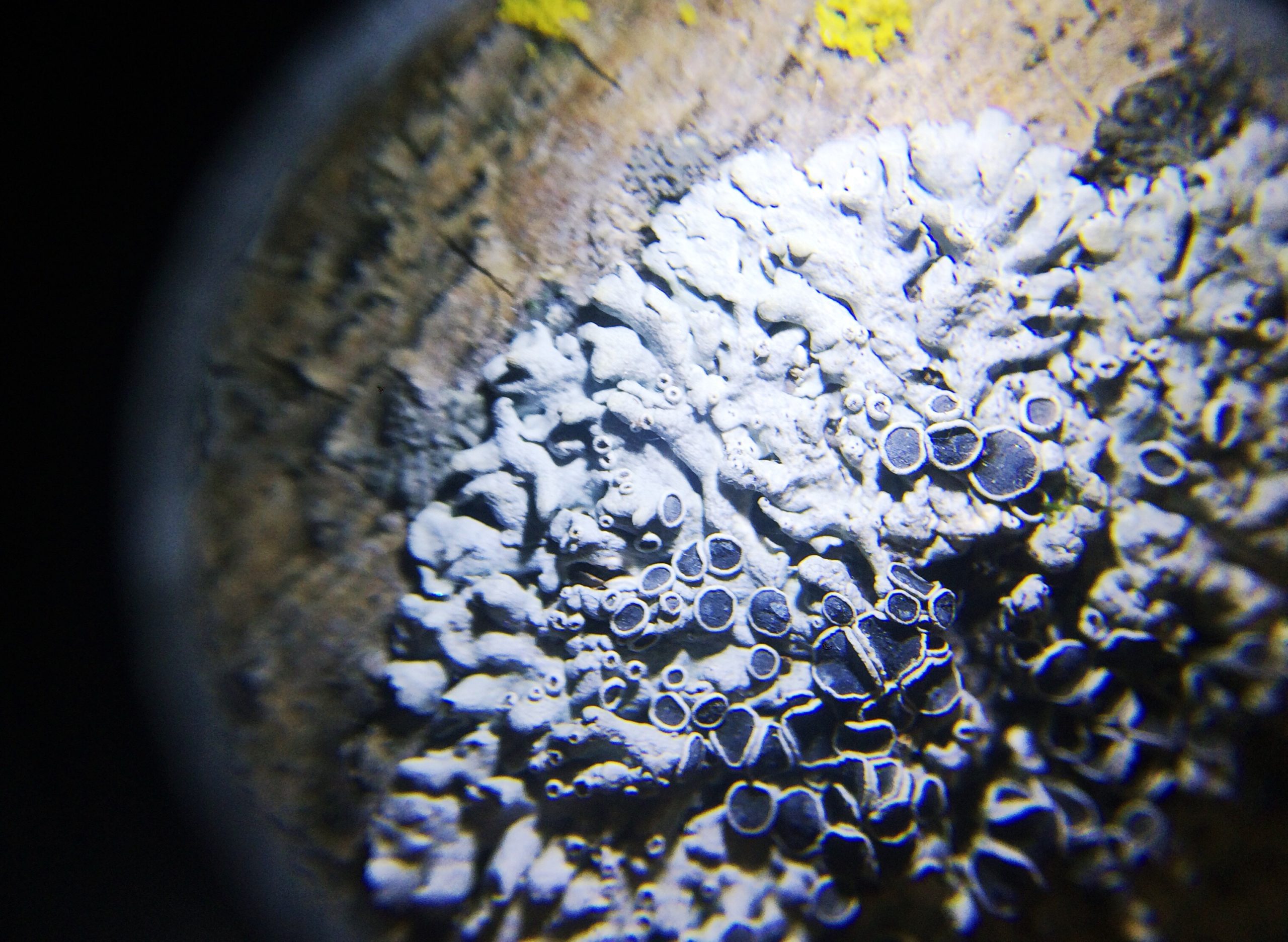
Supplies:
- Nature Anatomy book
- Moss & Lichens bundle
- Jeweler’s Loupe (or Magnifying Glass)
- Clumps of moss
- Sticks and bark with lichen on them
Lesson Activities:
- Read about mosses and lichens in the Nature Anatomy book (pp. 119-121), study the pictures, discuss how the different lichens and mosses look, where to find them, and how they look different from other types of plants.
- Head out on a nature walk to find some mosses and lichens. As you find different mosses and lichens, take note of where they’re growing, what other plants are around, what they look like, etc.
- Model narration to your kiddos as you study the mosses and lichens. Have them narrate back to you what they’re observing.
- If time (and attention) allows, take a few minutes to draw or note what you observe about the mosses and lichens.
- If you’re able, collect a small sample of each that you can take home to continue studying.
- Once home, use a jeweler’s loupe or magnifying glass to study your sample up close. Talk about what you’re seeing and describe what they look like. I would highly recommend studying the lichens using a jeweler’s loupe…they are absolutely AMAZING!
- Get our your poster and cards from the Moss & Lichens bundle. See if you can identify the mosses and lichen you found using the cards. What are they called? Where do they grow?
- Using your jeweler’s loupe or magnifying glass, add more details to the drawings you started on your nature walk (or go ahead and start your drawings now).
- And here’s a quick video to watch about lichens before or after your nature walk:
Animal Tracks
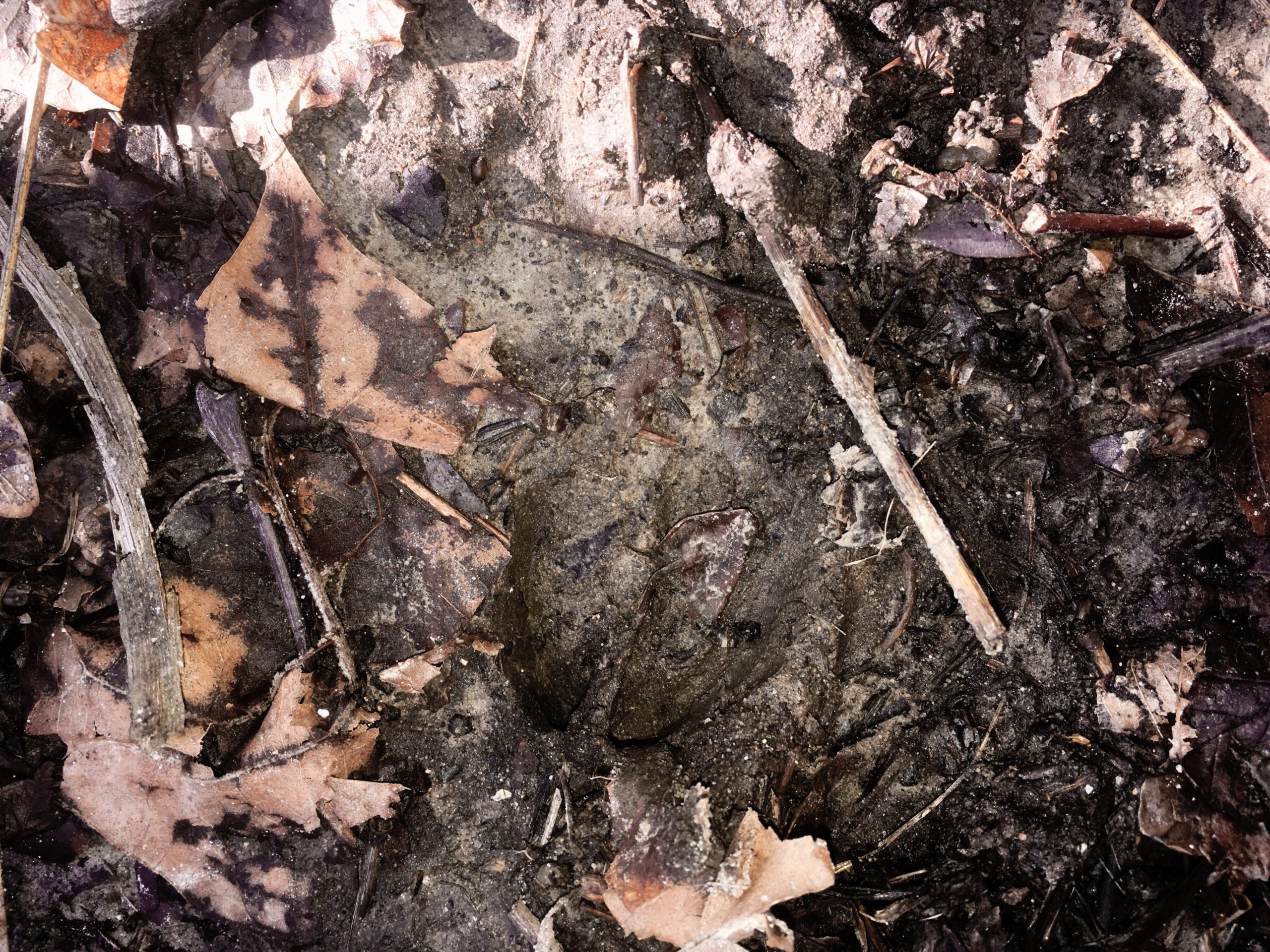
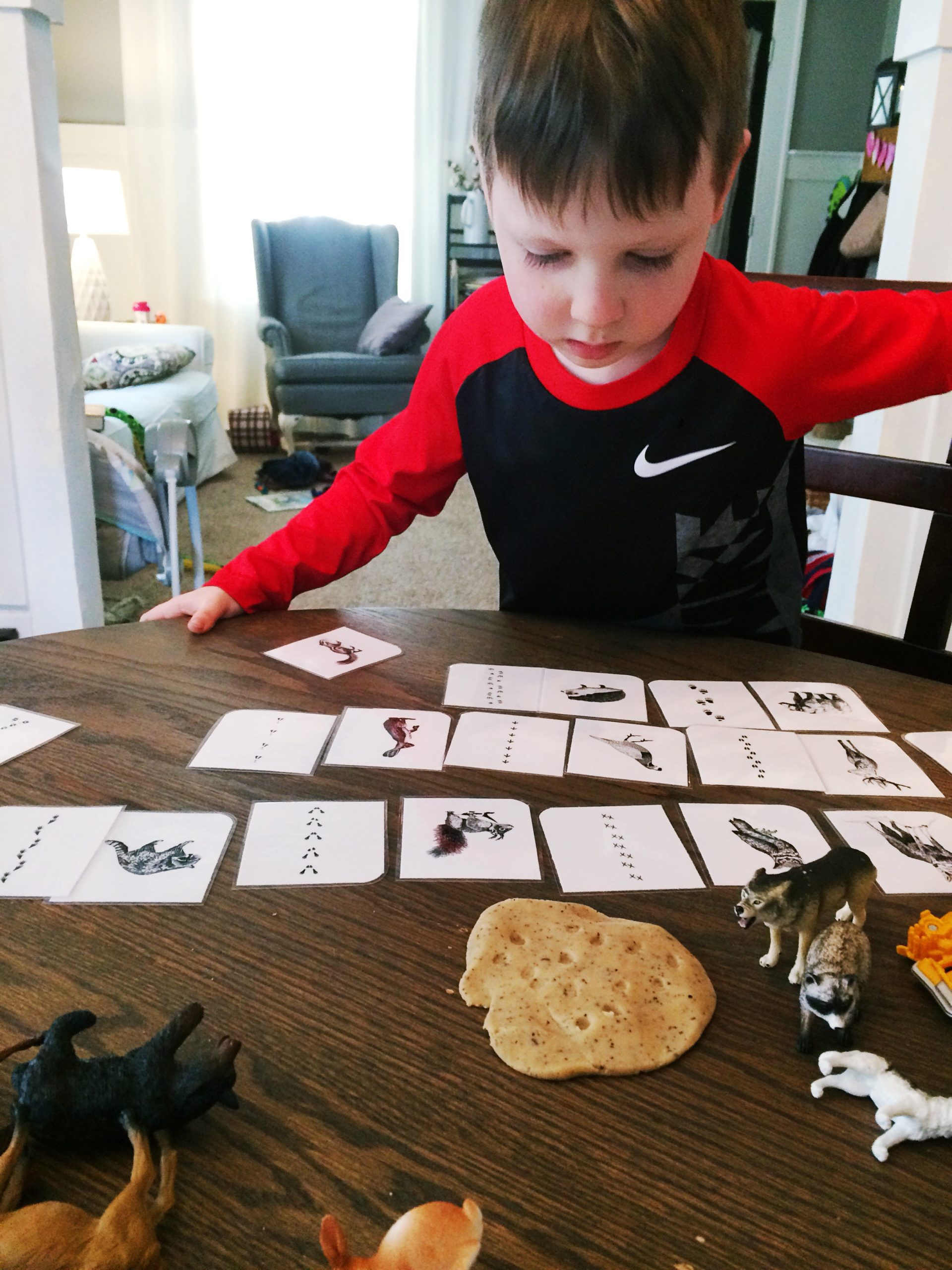
Supplies:
- Playdough and rolling pin
- Animal figurines with realistic footprints (we love these)
- Printable animal tracks 3-part cards
- Optional: Plaster of Paris
Lesson Activities:
- Go on a nature walk and search for animal tracks! Winter and spring are such fantastic times of the year for this activity, because the ground is soft and the tracks are easy to see. Prepare to leave the hiking trail just a little bit to find the best tracks, and keep an eye out for any game trails that cross the hiking trails.
- Once you find animal tracks, either take a picture of them or use your plaster mix to make a cast of the tracks you find. (Here is a great tutorial for making a cast of tracks.)
- See if you can identify the types of animals that left the tracks. Talk about the distinguishing features of each track with your kids. See if you can tell how quickly the animals might have been moving (we found some deer tracks in which the deer were clearly running versus others that were on a stroll).
- Make your own tracks as you go (bare feet are best, if the weather permits)! Talk about how our human footprints are different from animal tracks (or similar, in the case of raccoons).
- Either before or after your walk, use the 3-part cards to match the animals tracks with the animals.
- Roll out some play dough and practice making animals tracks through the dough with your animal figurines. If you do this activity after your nature walk, you can talk about how the tracks compare from the ones you saw in nature.
Life Cycle of a Frog

Supplies:
Lesson Activities:
- Hydrate the pond water beads (allow 4-6 hours).
- Read Over and Under the Pond together and talk about all of the different creatures that live in a pond. See if your kiddo can identify the different stages of the frog life cycle in the book.
- Set up your pond sensory bin with the frog life cycle figurines. Allow your kiddos to have some free play time with the sensory bin.
- Begin asking some questions about the different stages of the frog’s life cycle. What is different about each one? Which one do they think comes first? Give them the names of each stage. Ask them to put them in order.
- Lay out the life cycle cards and ask your kiddos to match the figurines with the cards. Together, read about each stage of the life cycle and discuss each.
Alright friends, I hope these Charlotte Mason-Inspired Nature Study resources are helpful! Being able to have such a nature-rich homeschool is one of our favorite things about homeschooling, and I hope it blesses your homeschool journey, too.

